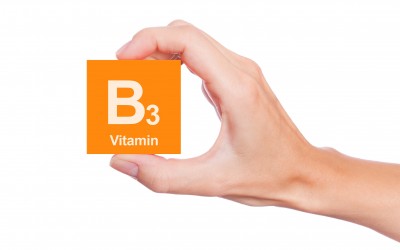Niacinamide is also known as vitamin B3, niacin, and nicotinic acid, this is a water-soluble ingredient and is stable in the presence of heat and light unlike Vitamin C. This little wonder vitamin is fast becoming a hero ingredient in many skincare products. Vitamin B3 should be not only taken orally but also applied topically to the skin too to reduce cancer, pigmentation and other skin conditions. In this blog we will look at what levels of Vitamin B3 need to be taken orally and in your skincare products to be effective in reducing skin cancer and other skin conditions.
Vitamin B3 in the diet – .
This essential vitamin is required by our body to be able to process fat in the body, lowering cholesterol levels. Even a slight deficiency of niacin can lead to irritability, poor concentration, anxiety, fatigue, restlessness, apathy, and depression. Diet very poor in Vitamin B3 can lead to the development of Pellagra – (niacin B3) – a condition characterized by diarrhea, dermatitis, dementia, inflammation of the mouth, amnesia, delirium, and if left untreated, death.
How much is required for normal functioning:
Vitamin B3, is a water soluble vitamin that the body process easily, thus overdose is rare, and only occurs when niacin is taken in the form of supplements. An overdose of niacin is seen in the form of skin rashes (flush), dry skin, various digestive maladies. A long term overdose can lead to liver damage, elevated blood sugar levels and type II diabetes, as well as increased risk of birth defects. The current Daily Requirement (DR) for Vitamin B3 is 20mg.
Eat it Naturally : All these values are based on 100 grams and their percentage of the Daily Requirement of 20mg.
- Fish – It has been found that cooked Yellow Fin Tuna having in 22.1mg per 100g or 110% , then the next best is Skipjack Tuna = 80%, Mackerel and Blue Fin Tuna = 45%, Wild Salmon = 43%, Swordfish =39%, Farmed Salmon and Halibut = 34%. These types of deep sea fish is full of omega 3 which is essential for your metal and physical health.
- Chicken = 74% & Turkey = 50%
- Pork = 54% – 35% depending on the cut
- Liver = Lamb 83%, Beef – 75%, Veal 61%, Chicken 57%, and Pork 36%
- Peanuts (Oil Roasted) = 69%
- Beef = 45% – 36% depending on the cut.
- Sunflower Seeds 42%, Chia Seeds (12%), Sesame (8%), Pumpkin & Squash (7%), and Sunflower (6%)
- Mushrooms 31%-14% depending on the variety
- Green Peas 10%
- Avocado 9%
How much is need to Reduce Cancer.
Nicinamide (vitamin B3) enhances DNA repair and prevents cutaneous immune suppression after ultraviolet (UV) radiation exposure. In a recent study it was shown to reduces photo-carcinogenesis in mice, and also in human non-melanoma skin cancers (NMSC). The Researchers have also reported that taking Oral vitamin B3 was shown to reduce Actinic Cancer in the double blind study of 386 participants took 500mg for 12 months and was concluded that nicotinamide reduced the formation of non-melanoma skin cancers in high-risk patients.
Applying Vitamin B3 Topical
Niacinamide prevents the transfer of melanosomes to keratinocytes, minimizingcolor deposits. Inflammatory mediators also are inhibited, reducing pigmentation associated with PIH.
When applied topical niacinamide at a level as small as 2% has been shown to increase ceramide and free fatty acid levels in skin, prevent skin from losing water content, as well as stimulate micro-circulation in the dermis. This was proven in a study and was shown to be more effective than petrolatum (Vaseline) for reducing water loss from skin and increasing its hydration levels.
In a study where the cream containing 5% niacinamide for a period of 12 weeks showed there was an improvement in the appearance of wrinkles, skin discolorations, less redness, a reduction in sallowness, and improved elasticity.
In addition to these studies it has been found that niacinamide has an inhibitory effect on the transfer of melanosomes to skin cells, thus vitamin B3 will interrupt the process that causes irregular pigmentation to form.
Due to its anti-inflamatory properties several studies at a level of 4% is effective on acne and works just as well as the prescription ance treament medicine Clindamycin but without the risk of antibiotic resistance.
How do you know if your skincare has enough Vitamin B3.
Due the levels required it should be about in the middle of the ingredient list on your product packaging or label. Unfortunately most major department store creams do not have more than 1% of Vitamin B3 with some having less than .1% in their creams. Due to the cost of Vitamin B3 you should be looking at paying about $35-$70 for a serum that has 2-5% level.








